October 15, 2022
Bushtits always make me smile.
Maybe it’s the way the puny balls of fluff tumble through the chokecherry this morning, six tiny beaks tweezering tinier bugs and larvae among the hard green leaves. The social birds seem to float rather than fly, each carried along by its own personal puff of air.
Or maybe it’s the name.
The scientific name for bushtit is Psaltriparus minimus. The “parus” of Psaltriparus in Latin means “small.” Breaking down the scientific name further, my best guess is that psaltri is from psaltery, an ancient stringed instrument similar to the lyre, but having a trapezoidal sounding board. Then we have the species name minimus meaning “the smallest.”
So, the bushtit, Psaltriparus minimus, is the smallest of the small trapezoid-shaped musical instruments.
Even the “tit” in bushtit comes from Old Icelandic “titr” meaning something small.
Tiny fiddlers. What’s not to love? Flitting about like Lindsey Stirling on electric crossbow violin.
Bushtit song (above) and (below) slowed down by half.
The family Aegithalidae contains 13 species of bushtits, but only ours, often called the American bushtit, lives in the Western Hemisphere, and then only in the West from Vancouver to Guatemala. They are allied with another family (Paridae) that comprises the similar-looking, social and inquisitive titmice and chickadees, which bushtits often join to form “mixed flocks” of woodland songbirds. A group of titmice is sometimes called a “banditry,” but I prefer the more peaceful “dissemination” of titmice. The collective noun for a group of bushtits is, of course, a “cloud” of bushtits.
They seem to be among the most extroverted of birds.
In fact, bushtits are one of the first species of birds discovered to breed cooperatively. In the nearby Chiricahua Mountains, one-third of the nests have more than two attending adults raising the young. The extra “helpers” are mostly unmated males (related and unrelated), or pairs of birds from earlier failed breeding attempts.
Both sexes help to weave bag-like nests of cobwebs and lichen that hang exposed in pine and hackberry trees like some hiker’s flung woolen socks.
I pull on my socks against the morning chill. For the first time this fall, we’ve dipped into the mid-forties. Sweatshirt weather. With the bushtits, I’ve logged 75 species for the first half of October, but the hummingbirds are already pointing their bills toward warmer climes. Only three remain.
Time to break out the flannel PJs for this most introverted of birdwatchers.

Thanks for enjoying the Big Yard with me!
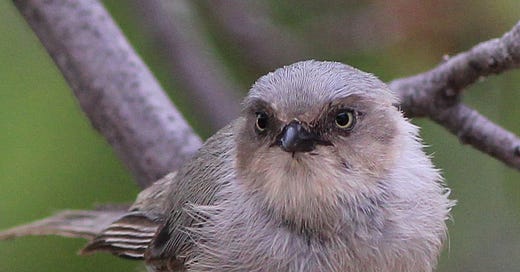



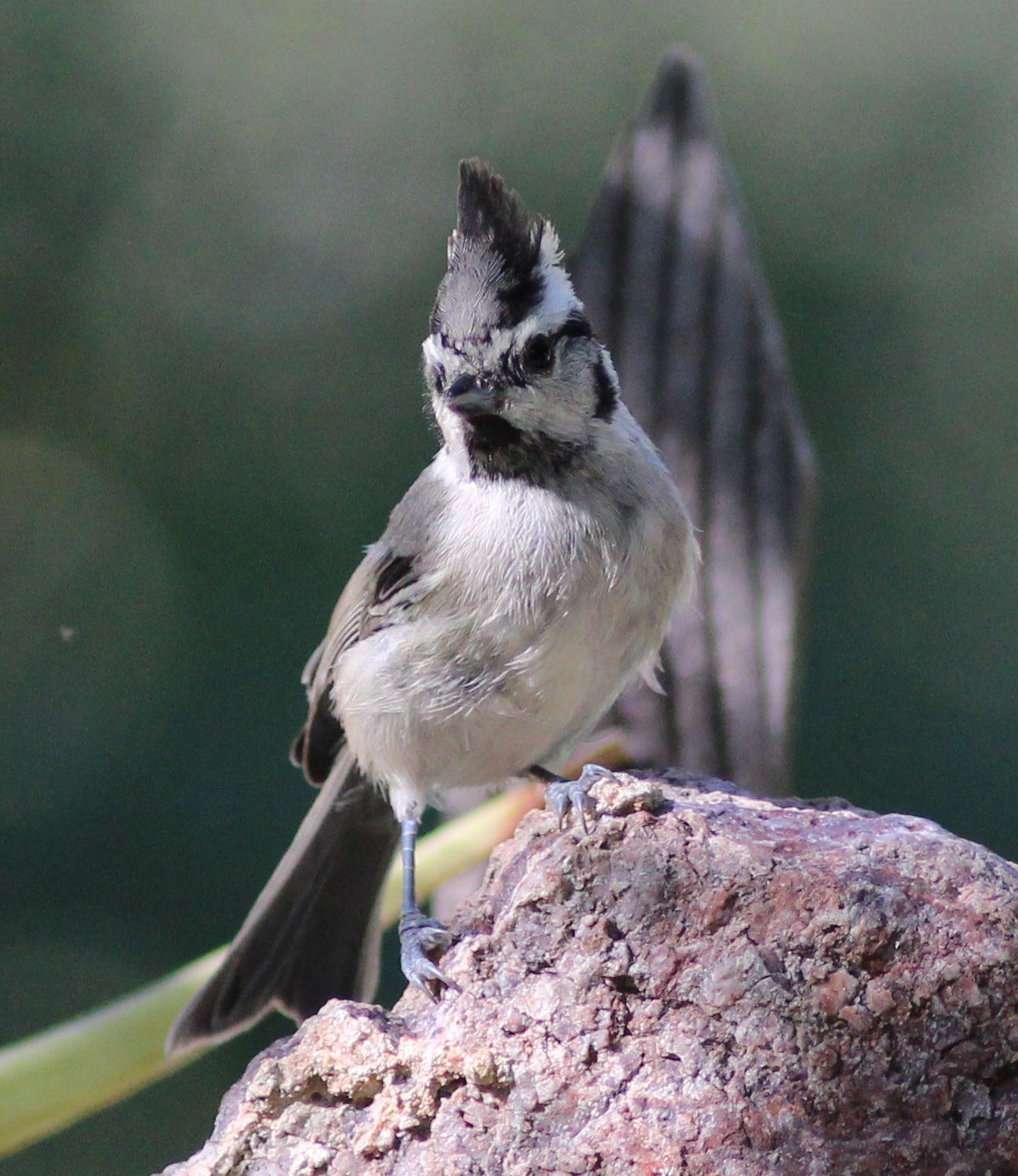

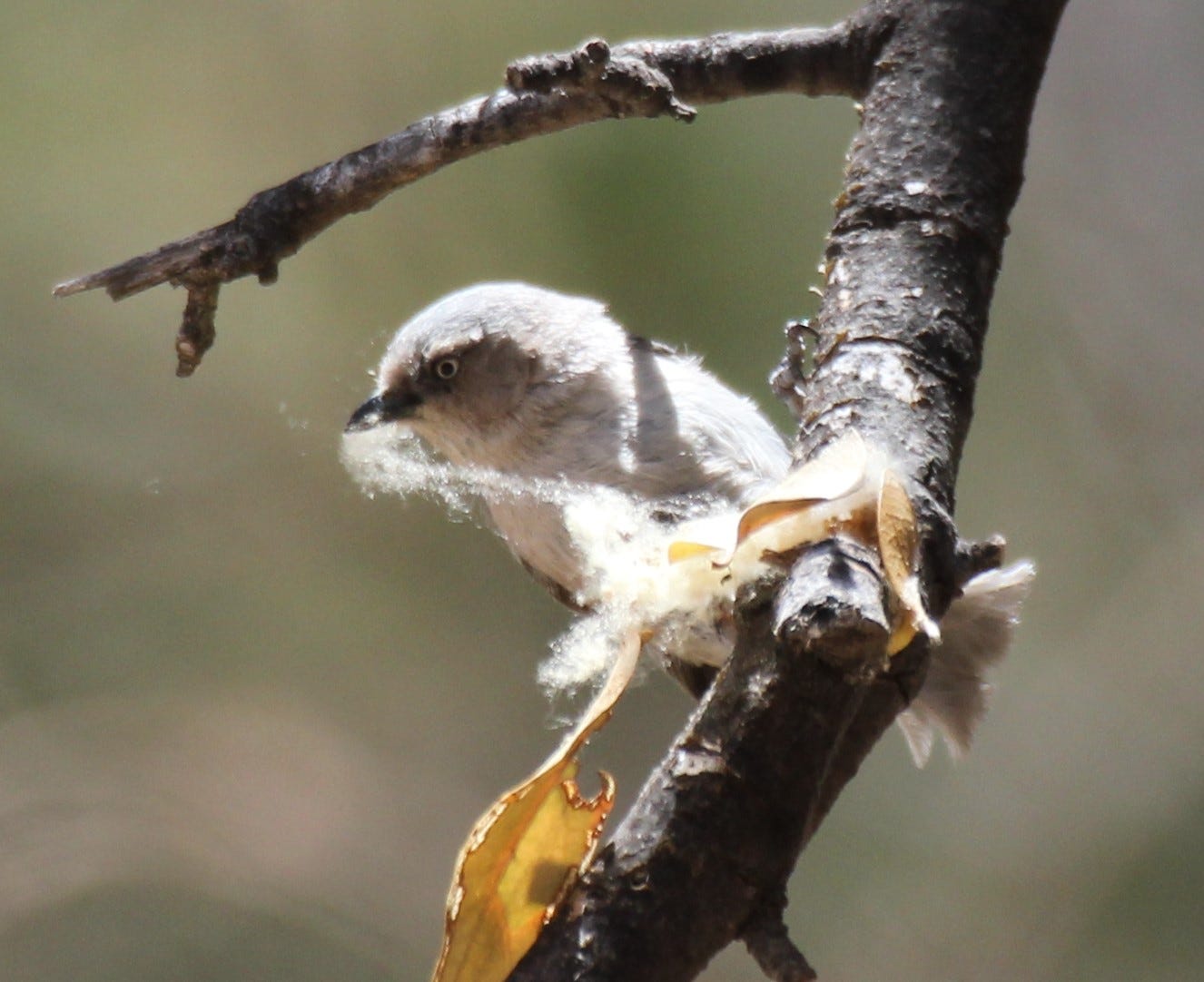
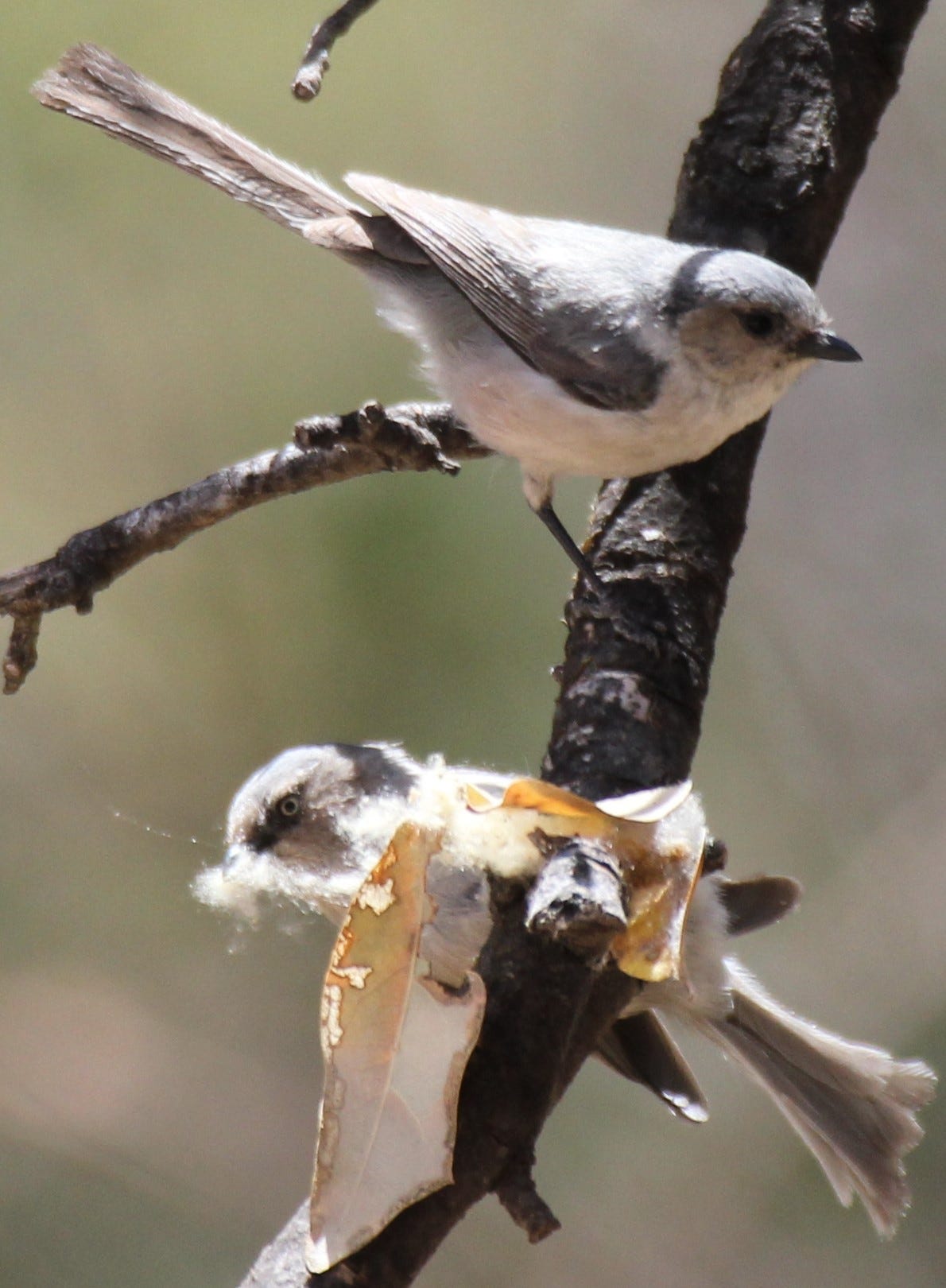
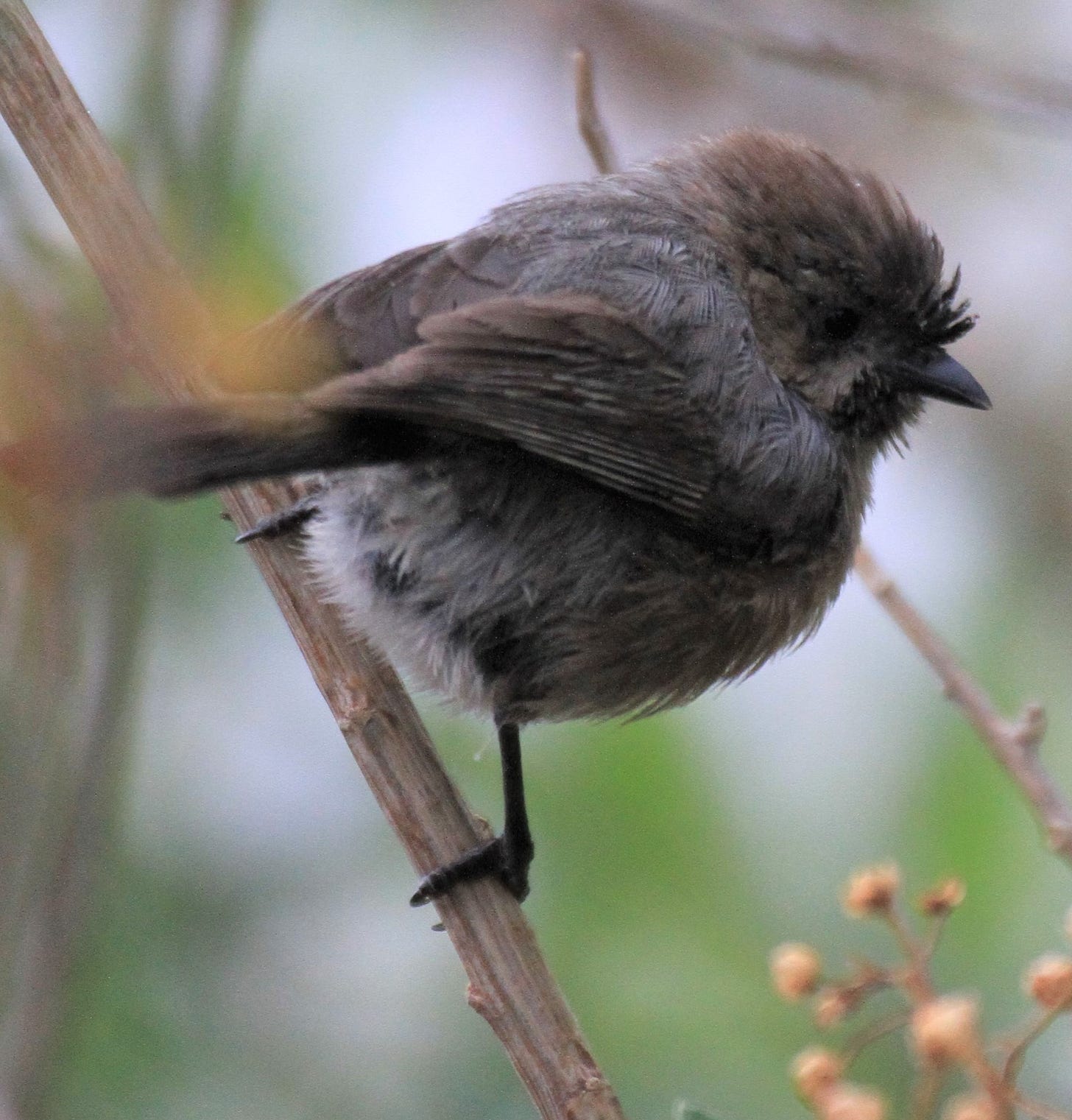
The bush tit song, particularly slowed down, was wonderful. We haven’t seen bush tits at 7000 ft on the North
Mules yet this year.
Thank you for these sweet little birds <3